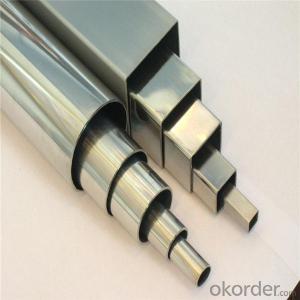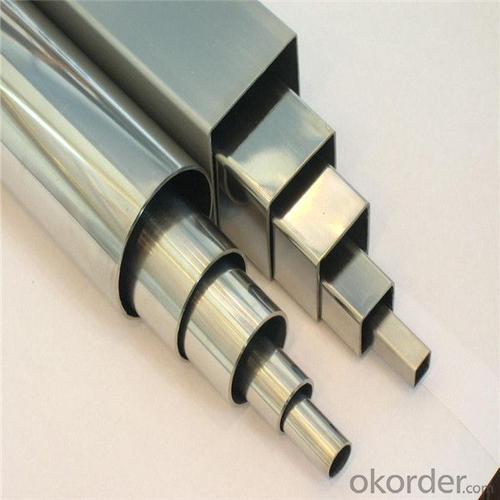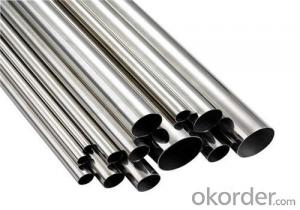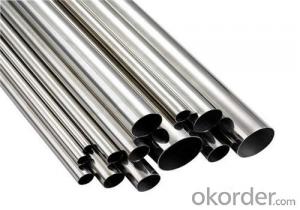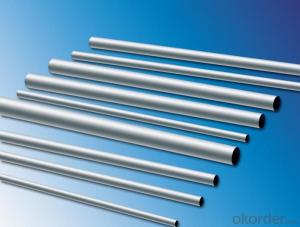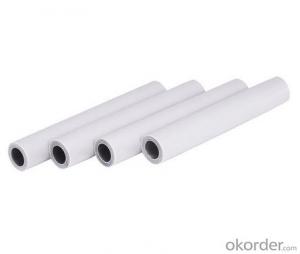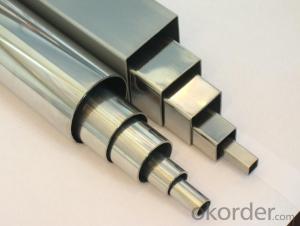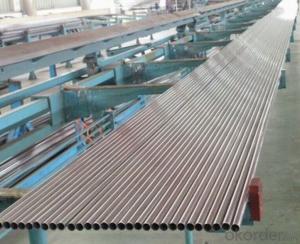304 304l 316 316l 317 317l Stainless Steel Welded Pipe
- Loading Port:
- Shanghai
- Payment Terms:
- TT OR LC
- Min Order Qty:
- 2 m.t.
- Supply Capability:
- 25000 m.t./month
OKorder Service Pledge
OKorder Financial Service
You Might Also Like
Specification
304 304l 316 316l 317 317l stainless steel welded pipe
1. Product Description
The details of my company | |||
The stainless steel sheet/coil/strip | |||
standard | ASTM,GB | ||
material | 201,202,301,304,316,316L,316LN,317,317L,309,309S,310,310S,430,409 | ||
specification | thickness | 0.3mm—20mm | |
width | 120mm—2000mm | ||
Production technology | Hot rolled , | ||
cold rolled | |||
Surface treatment | 2B,BA,8K,No.1,Etching,Hairline,Satin,Mirror,Vibration,Bead Blast,Embossed | ||
The stainless steel pipe | |||
standard | ASTM,GB | ||
material | 201,202,301,304,316,316L,316LN,317,317L,309,309S,310,310S,430,409 | ||
specification | Wall thickness | 0.3mm-60mm | |
Round | 6mm-630mm | ||
Square | 10*10mm-150*150mm | ||
rectangle | 10*20mm-100*200mm | ||
Surface treatment | Polishing (180#,220#,240#,320#400#,600#), Hairline,aid pickling and so on | ||
Production technology | Seamless steel pipe | ||
Welded steel pipe | |||
Surface treatment | Polishing or not | ||
The stainless steel bar | |||
standard | ASTM,GB | ||
material | 201,202,301,304,316,316L,316LN,317,317L,309,309S,310,310S,430,409 | ||
specification | Round | ||
Square | |||
rectangle | |||
Product Show
2. Product Pictures of 304 304l 316 316l 317 317l stainless steel welded pipe
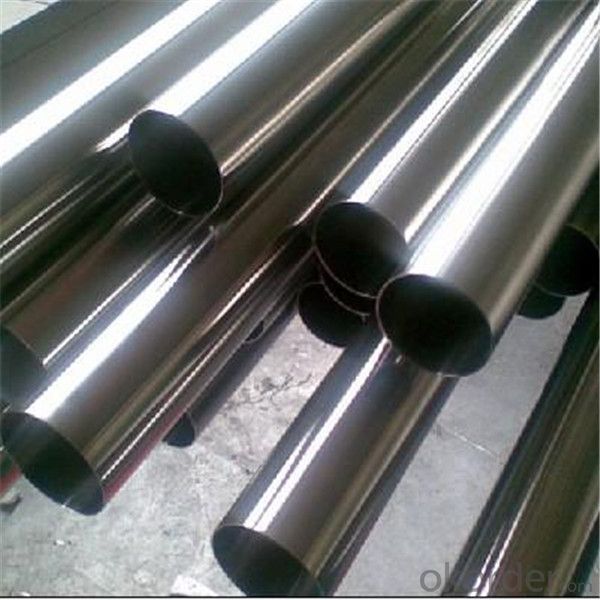
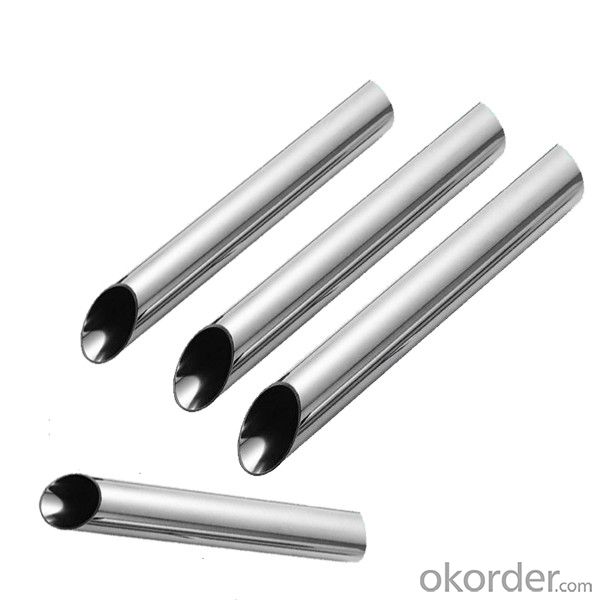
3. Applications
Milk and food industry, pharmaceutical industry, industries with special internal surface requirements.
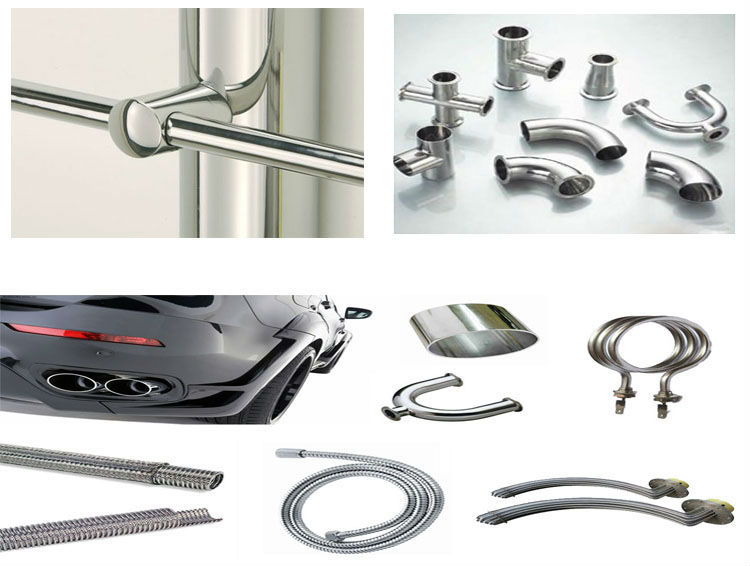
4. Stainless steel conservation
Stainless steel is a popular metal for appliances these days. Many kitchen appliances, both large and small, are made with stainless steel. Pots and pans and eating utensils are also made with stainless steel. One advantage of stainless steel is that is very resistant to rusting. But it can get rust stains from transference of rusty objects. You can keep stainless steel rust-free by following a few simple steps.
Clean frequently with a cleaner and water. Any cleaner that is safe for glass is usually safe for stainless steel.
Scrub off all rust from these objects with a scrubbing pad or steel wood pad. This means getting rid of rust from pots and pans before putting them into a stainless steel sink or on top of a stainless steel stove.
Put a rubber mat at the bottom of the stainless steel sink before placing rusted pots and pans (such as cast iron cookware) in the sink.
Apply a thin layer of lubricant (such as mineral oil) to the surface of the stainless steel. This prevents rust from forming.
Inspect equipment frequently, if you notice discoloration, tarnish or water stains, increase the frequency of your fresh water rinses to reduce accumulated chemicals
- Q: What is lined with stainless steel?
- Stainless steel lining is a method of trenchless repair of underground pipes.
- Q: Are stainless steel pipes suitable for power generation plants?
- Power generation plants find stainless steel pipes to be a suitable option. Stainless steel is renowned for its exceptional resistance to corrosion, which makes it an ideal choice for power generation plants dealing with high temperatures, pressure, and corrosive surroundings. It is common for power generation plants to utilize different fluids like steam, water, and chemicals, which have the potential to cause corrosion and deterioration of the piping system. Stainless steel pipes can withstand such harsh conditions while ensuring long-lasting performance. Additionally, stainless steel pipes possess high strength and durability, which is crucial for power generation plants operating under high pressures. They can handle the stress and strain of the system without the risk of failure or leakage. Moreover, stainless steel exhibits resistance to scaling and fouling, which plays a significant role in maintaining the power plant's efficiency. The smooth inner surface of stainless steel pipes minimizes friction and pressure losses, guaranteeing the efficient flow of fluids. Furthermore, stainless steel pipes are easy to maintain and clean, eliminating the need for frequent inspections or repairs. This reduces downtime and maintenance costs for power generation plants. In conclusion, the remarkable corrosion resistance, strength, durability, and efficiency of stainless steel pipes make them highly suitable for power generation plants. They provide a dependable and long-lasting solution for fluid conveyance in demanding environments.
- Q: What is the difference between Schedule 30 and Schedule 40 stainless steel pipes?
- The main difference between Schedule 30 and Schedule 40 stainless steel pipes lies in their wall thickness. Schedule 40 pipes have a thicker wall compared to Schedule 30 pipes. This difference in thickness makes Schedule 40 pipes more suitable for high-pressure applications and heavy-duty usage, while Schedule 30 pipes are typically used for lower-pressure applications.
- Q: Are stainless steel pipes suitable for oil refineries?
- Yes, stainless steel pipes are suitable for oil refineries. Stainless steel is known for its high resistance to corrosion and high temperatures, making it an ideal material for handling various corrosive substances, including oil and petroleum products, in refinery operations. Additionally, stainless steel pipes offer excellent strength and durability, ensuring the safe and efficient transportation of fluids within the refinery infrastructure.
- Q: Can stainless steel pipes be used for geothermal systems?
- Yes, stainless steel pipes can be used for geothermal systems. Stainless steel is highly resistant to corrosion and can withstand the high temperatures and pressures involved in geothermal applications, making it an ideal choice for these systems.
- Q: Can stainless steel pipes be used for mining and mineral processing applications?
- Yes, stainless steel pipes can be used for mining and mineral processing applications. Stainless steel is known for its excellent corrosion resistance and durability, making it suitable for handling various corrosive and abrasive materials found in mining and mineral processing operations. Additionally, stainless steel pipes can withstand high temperatures and pressures, making them a reliable choice for transporting fluids and slurries in these applications.
- Q: What is the maximum pressure rating for stainless steel pipes?
- The maximum pressure rating of stainless steel pipes can vary due to several factors, including the stainless steel grade, pipe diameter and wall thickness, and specific application or industry requirements. Nonetheless, stainless steel pipes are renowned for their exceptional strength and resistance to corrosion, making them ideal for high-pressure applications. Generally, stainless steel pipes can withstand maximum pressure ratings ranging from a few hundred psi to several thousand psi. To determine the precise maximum pressure rating for a specific stainless steel pipe in a given application, it is imperative to refer to the relevant industry standards, codes, and specifications or seek guidance from a qualified engineer or manufacturer.
- Q: Can stainless steel pipes be used for underground water supply lines?
- Indeed, underground water supply lines can utilize stainless steel pipes. Due to its exceptional resistance to corrosion, stainless steel proves to be an excellent option for subterranean applications where the pipes may encounter soil, moisture, and other corrosive elements. Moreover, its impressive strength and durability characteristics guarantee that the pipes can endure the pressure and strain associated with burial. Additionally, stainless steel serves as a hygienic material that does not release any hazardous substances into the water supply, rendering it safe for drinking purposes. In conclusion, stainless steel pipes present themselves as a dependable and enduring choice for underground water supply lines.
- Q: What is the maximum diameter of stainless steel pipes available?
- The maximum diameter of stainless steel pipes available can vary depending on the manufacturer and specific requirements, but they can typically range from a few millimeters to several meters in diameter.
- Q: Are stainless steel pipes resistant to high temperatures?
- Stainless steel pipes are known for their ability to withstand high temperatures. They are designed to maintain their structural integrity even when exposed to elevated temperatures. The high chromium content in stainless steel creates a protective oxide layer on the surface, preventing corrosion and ensuring long-lasting strength and durability, even in extreme temperature conditions. As a result, stainless steel pipes are suitable for various high-temperature applications, including industrial furnaces, heat exchangers, and exhaust systems. However, it is important to consider that the resistance to high temperatures may vary depending on the grade and alloy of stainless steel used. Therefore, it is crucial to carefully select the appropriate grade of stainless steel based on the specific temperature requirements of the application.
Send your message to us
304 304l 316 316l 317 317l Stainless Steel Welded Pipe
- Loading Port:
- Shanghai
- Payment Terms:
- TT OR LC
- Min Order Qty:
- 2 m.t.
- Supply Capability:
- 25000 m.t./month
OKorder Service Pledge
OKorder Financial Service
Similar products
Hot products
Hot Searches
Related keywords
